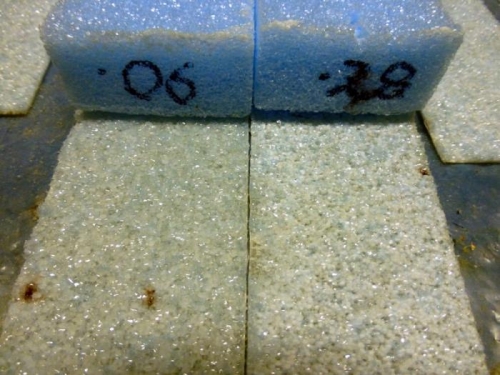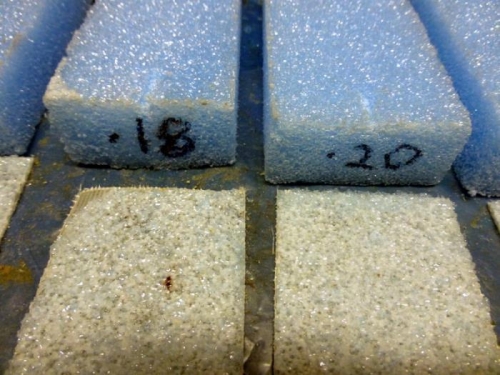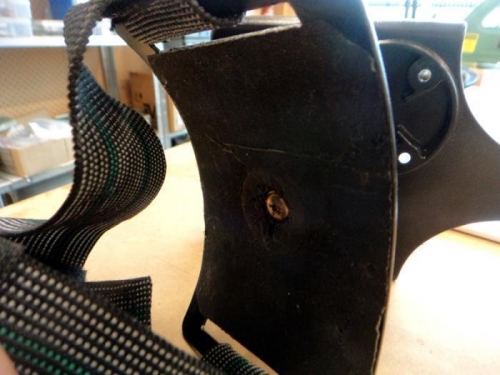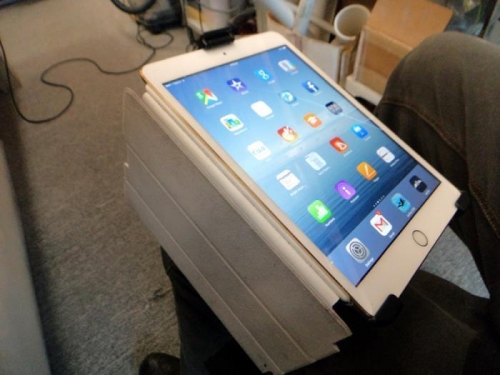| Date: 12-22-2013 | |
| Number of Hours: 4 | |
| Manual Reference: |
Test 2 22/12/13 after 1 week cure
All Blocks 8.2grams before layup 5” X 2.3”=11.5sq “ Blue Wing foam off-cuts
Peel force was measure by a cheap spring scale hooking under the foam and pulling consistently at an angle of about 150degrees down
micro Weight Saving Peel Force Spread
1.1g 0.06 micro 17.6 zero(base) 6-7lbs very runny slurry
2. 1g 0.12 micro 17.6 zero 12
3. 1g 0.14 micro 16.9 – 0.7 12 nice easy spread
4. 1g 0.16 micro 16.5 -0.9 8
5. 1g 0.18 micro 16.6 -1.0 10 heavy spread, good fill
6. 1g 0.20 micro 16.7 -0.9 10 still just OK
7. 1g 0.22 micro 16.1 -1.5 10 very stiff
8. 1g 0.24 micro 17.1 -0.5 10
9. 1g 0.26 micro 17.2 -0.4 8-10 needs heat to mix
10. 1g 0.28 micro 17.0 -0.6 12 unusable, too stiff to mix
Conclusions
Around #5 seems a good mix with a 1 gram saving.
(#7 seems an anomaly in the weight numbers)
Peel strength is consistent with more epoxy (slurry) being weakest, testing was with an old spring scale and not accurate.
All mixes broke at the foam with more foam residue on #1 the rest were not dramatically less and were consistent. The very thick micro tends to ball up just a little under the glass which suggests it fills the holes more completely. Note that the very thick micro tends to be heavier as more is applied despite trying to keep the spread even..
Long-EZ Wing area is given as 81.99 sq feet (this is pretty close to plans for just the wing without strakes) call it 82sq’ (I got 82.1 doing a rough calc using plans page19-10)
Call this 164sq’ of blue foam upper and lower
Saving to be 1 gram per 11.5sq” or per 0.077sq foot
164 /0.077 = 2130grams = 4.7 pounds saving over the wings of a LE
This saving is compared to the plans ‘slurry’ mixture of about 1:1 by volume
Peel test in action
Thinnest and thickest similar
sample #5 0.18 looks good









